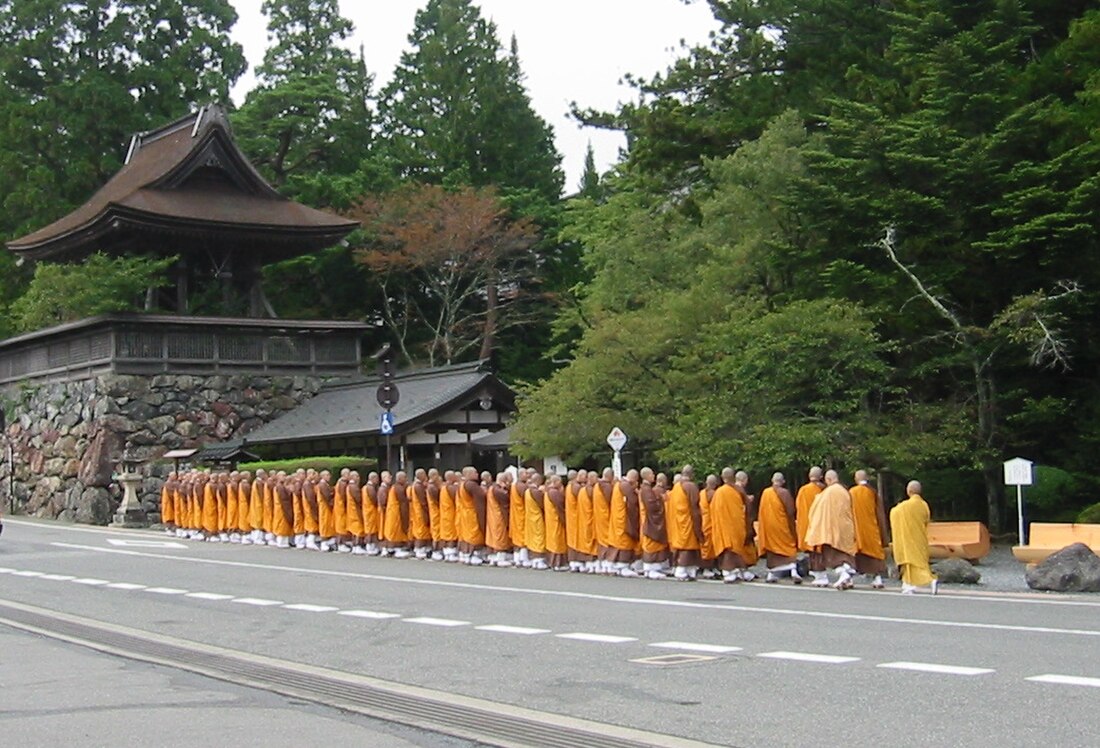Top Qs
Timeline
Chat
Perspective
Angya
From Wikipedia, the free encyclopedia
Remove ads
Angya (行脚[1]) is a term used in Zen Buddhism in reference to the traditional pilgrimage a monk or nun makes from monastery to monastery, literally translated as "to go on foot."[2] The term also applies to the modern practice in Japan of an unsui (novice monk) journeying to seek admittance into a monastery for the first time. These unsui traditionally wear and/or carry a kasa, white cotton leggings, straw sandals, a kesa, a satchel, razor, begging bowls (hachi) and straw raincoat.[3] When arriving the novice typically proffers an introductory letter and then must wait for acceptance for a period of days called tangaryō. Upon admittance he undergoes a probationary period known as tanga-zume.[2][3] Considered an aspect of the early monk's training, angya had in ancient times lasted for many years for some. For instance, Bankei Yōtaku undertook a four-year angya upon leaving Zuiō-ji in 1641.[4]

Remove ads
See also
- Tangaryō
- Tanga-zume
Notes
References
Wikiwand - on
Seamless Wikipedia browsing. On steroids.
Remove ads
